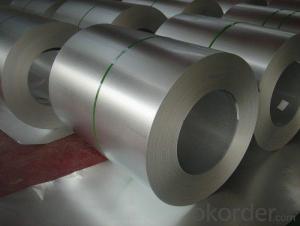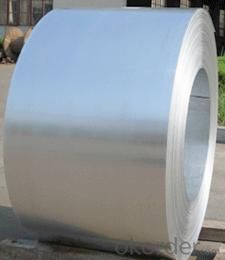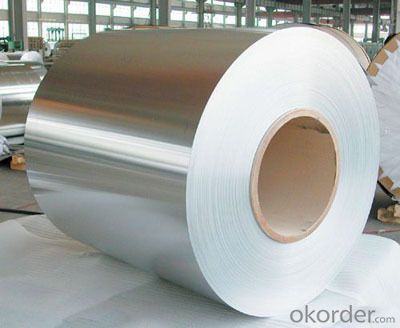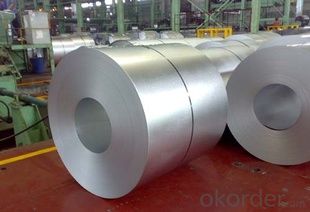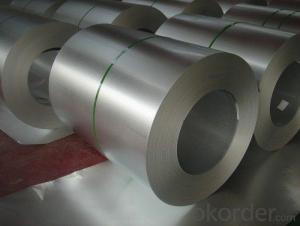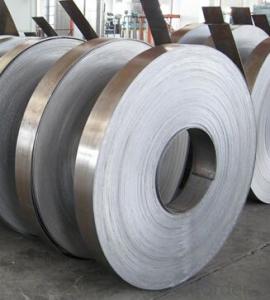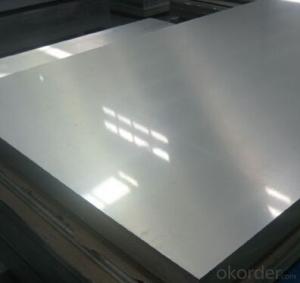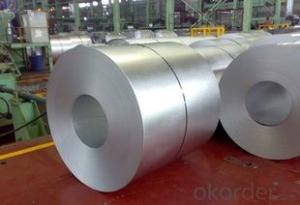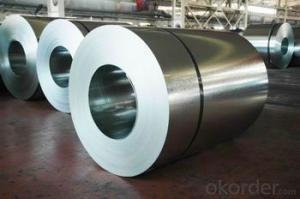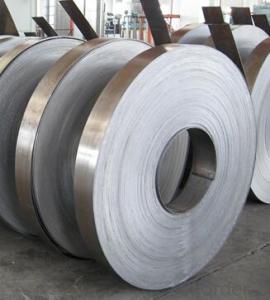NO.1 BEST HOT-DIP ALUZINC STEEL COIL
- Loading Port:
- China Main Port
- Payment Terms:
- TT OR LC
- Min Order Qty:
- -
- Supply Capability:
- -
OKorder Service Pledge
OKorder Financial Service
You Might Also Like
Quick Details |
|
|
|
|
|
Standard: | AISI,ASTM,BS,DIN,GB,JIS | Grade: | SGCC,DX51D/DX52D/S250,280GD | Thickness: | 0.12-4.0 mm |
Place of Origin: | Brand Name: | N/M | Model Number: | ssp-226 | |
Type: | Steel Coil | Technique: | Cold Rolled | Surface Treatment: | galvanized/ Galvalume/zinc coatting |
Application: | strong anti-corrosion ability,cold bending molded manufacturablity | Special Use: | High-strength Steel Plate | Width: | 600-1250 mm |
Length: | in coil | product: | g40 prime/secordary hot-dip galvanized cold rolled steel coil/sheet |
|
|
Packaging & Delivery |
|
|
|
|
|
Packaging Detail: | standard export package,Other types of packing can be customized as per client's requirement. | ||||
Delivery Detail: | as per client's requirements | ||||
Specifications
1.Mateials:SGCC,DX51D / DX52D /S250,280GD
2.Size:width:600-1250mm(900mm,1215mm,1250mm,1000mm the most common)
thickness:0.15-2.0mm
length:1000-6000mm,as your require
3.Zinc coating :60-180g( as required)
4.Coil id:508mm
5.Coil weight: 3-5MT(as required)
6. Surface:regular/mini/zero spangle, chromated, skin pass, dry etc.
7. Application:
With excellent cold bending molded manufacturablity, good decoration effect, strong anti-corrosion ability, galvanized steel coils and sheets are also pollution-free and easily recycled. Accordingly, they can be used as final products and basic plates of color coated steel coils.
8.PackagingDetails:
Standardexport package.
Othertypes of packing can be customized as per client's requirements.
- Q: What are the different types of steel coil finishing equipment?
- Various industries utilize a range of steel coil finishing equipment to ensure that steel coils are properly prepared and finished according to the desired specifications. Some commonly used equipment includes: 1. Slitting lines, which cut large steel coils into narrower strips using multiple slitting knives at high speeds. These are commonly used in automotive, construction, and packaging industries. 2. Leveling lines, which flatten and straighten steel coils with uneven surfaces or irregularities using leveling rolls and tension control systems. These are commonly used in the manufacturing of appliances, furniture, and metal roofing. 3. Recoiling lines, which rewind steel coils into smaller coils of specific diameter and weight by carefully winding them around a mandrel. These are commonly used in electrical, HVAC, and steel distribution industries. 4. Cut-to-length lines, which cut steel coils into specific lengths as per customer requirements using precision measuring systems and hydraulic shears. These are commonly used in manufacturing, construction, and fabrication industries. 5. Coating lines, which apply protective coatings or finishes on steel coils to enhance corrosion resistance, durability, and appearance. These lines typically consist of cleaning and pre-treatment sections, followed by coating application sections. They are commonly used in automotive, appliances, and construction industries. These examples represent just a few of the available types of steel coil finishing equipment. Each type serves a specific purpose and plays a crucial role in the manufacturing and processing of steel coils for various applications.
- Q: Can steel coils be coated with QR codes?
- Yes, steel coils can be coated with QR codes. QR codes can be printed or engraved onto the surface of the steel coils, allowing for easy scanning and identification of the coils.
- Q: How are steel coils inspected for formability using forming tests?
- Steel coils are inspected for formability using forming tests by subjecting them to various forming processes such as bending, stretching, or deep drawing. These tests help evaluate the ability of the steel to undergo deformation without cracking or tearing. The formed samples are then inspected for any defects or imperfections, such as surface irregularities, fractures, or wrinkling. This allows manufacturers to assess the quality and suitability of the steel coils for specific applications, ensuring they meet the required standards of formability.
- Q: What minerals are mixed to make steel?
- Carbon and Iron.....usually.
- Q: Can steel coils be coated with zinc-aluminum alloy?
- Yes, steel coils can be coated with zinc-aluminum alloy, which is often referred to as galvalume or zincalume coating. This type of coating provides excellent corrosion resistance and durability to the steel coils, making them suitable for various applications in industries like construction, automotive, and appliances.
- Q: How are steel coils used in the production of infrastructure materials?
- The durability, versatility, and strength of steel coils make them widely used in the production of infrastructure materials. Typically, these coils are made from hot-rolled steel, forming large rolls or coils that are easily transported and handled. One common application of steel coils in infrastructure materials involves producing steel sheets and plates. These coils can be further processed to create flat sheets of steel, which are then utilized in various construction purposes. For instance, steel sheets are frequently employed in manufacturing bridges, highways, and buildings due to their ability to withstand heavy loads and adverse weather conditions. Another important use of steel coils in infrastructure materials is manufacturing pipes and tubes. Steel coils are often processed into seamless or welded pipes that find usage in water and gas pipelines, as well as the transportation of liquids and gases. Infrastructure projects prefer steel pipes and tubes due to their high strength, corrosion resistance, and ability to endure high-pressure environments. Moreover, steel coils are also employed in the production of reinforcing bars or rebars, crucial components in the construction of reinforced concrete structures. These rebars, made from coiled steel, are embedded within concrete to provide tensile strength and enhance the structural integrity of buildings, bridges, and other infrastructure projects. Steel coils enable efficient production of rebars, ensuring consistent quality and size for reinforced concrete constructions. In conclusion, the use of steel coils is essential in the production of infrastructure materials. Their contribution to manufacturing steel sheets, pipes, and rebars ensures the durability, strength, and reliability of infrastructure projects. By providing a versatile and robust material, steel coils contribute to the development of safe and long-lasting structures in our built environment.
- Q: How are steel coils used in the production of HVAC systems?
- Steel coils are used in the production of HVAC systems as they serve as the primary component for heat transfer. These coils are responsible for absorbing heat from the surrounding air and transferring it to cool the interior of a building. Additionally, steel coils are used for the condenser coils in HVAC systems, where they aid in the removal of heat from the refrigerant, allowing for efficient cooling and dehumidification.
- Q: What are the different types of coil slitting machines?
- There are several different types of coil slitting machines available in the market, each designed to meet specific requirements and preferences. Some of the common types include: 1. Rotary shear slitters: These machines use rotary knives mounted on a rotating drum to cut the coil into narrow strips. They are ideal for high-speed operations and can handle large volumes of material. 2. Loop slitters: Loop slitting machines feed the coil through a loop to maintain tension and prevent material damage during the slitting process. They are suitable for delicate materials or those prone to deformation. 3. Turret slitters: Turret slitting machines have multiple sets of slitting knives mounted on a rotating turret. This allows for quick and easy changeover between different slitting configurations, reducing downtime and increasing productivity. 4. Drag slitters: Drag slitting machines use a stationary knife and a moving clamp to hold and pull the coil through the cutting process. They are versatile and can handle a wide range of materials, including thick or heavy coils. 5. Crush slitters: Crush slitting machines use a set of opposing rollers to crush and cut the coil material. They are commonly used for softer materials or those that are difficult to cut with traditional knives. 6. Laser slitters: Laser slitting machines use a high-powered laser beam to precisely cut through the coil material. They offer unmatched accuracy and are suitable for high-end applications or materials with complex shapes. Each type of coil slitting machine has its own advantages and limitations. The choice of machine depends on factors such as the type of material, required speed, desired accuracy, and production volume.
- Q: How are steel coils tested for flatness and straightness?
- Steel coils are tested for flatness and straightness using various methods such as visual inspection, measurement tools like straightedges or laser devices, and specialized equipment like leveling machines. These tests ensure that the steel coils meet the required standards and are free from any deformities or deviations in their flatness and straightness.
- Q: What are the different methods of coil recoiling for narrow strip widths?
- There are several different methods of coil recoiling for narrow strip widths. One method is known as slitting and recoiling, which involves cutting the wide coil into narrower strips and then rewinding them onto a smaller coil. This is typically done using a slitting machine, which can make precise cuts to create the desired strip widths. Another method is known as edge trimming and recoiling. In this process, the edges of the wide coil are trimmed to create narrower strips, and then the remaining material is rewound onto a smaller coil. This method is often used when the edges of the coil are damaged or uneven and need to be removed before recoiling. Additionally, there is a method called tension recoiling. In this process, the wide coil is passed through a series of tensioning devices that help to create the desired strip widths. The tensioning devices can apply controlled pressure to the edges of the coil, allowing for precise recoiling of narrow strips. Furthermore, some companies use laser cutting technology for coil recoiling. This method involves using a laser beam to cut the wide coil into narrow strips, followed by rewinding onto a smaller coil. Laser cutting offers high precision and accuracy, making it an ideal option for narrow strip widths. Overall, the different methods of coil recoiling for narrow strip widths include slitting and recoiling, edge trimming and recoiling, tension recoiling, and laser cutting. Each method has its own advantages and is chosen based on the specific requirements and capabilities of the manufacturing process.
Send your message to us
NO.1 BEST HOT-DIP ALUZINC STEEL COIL
- Loading Port:
- China Main Port
- Payment Terms:
- TT OR LC
- Min Order Qty:
- -
- Supply Capability:
- -
OKorder Service Pledge
OKorder Financial Service
Similar products
Hot products
Hot Searches
Related keywords
